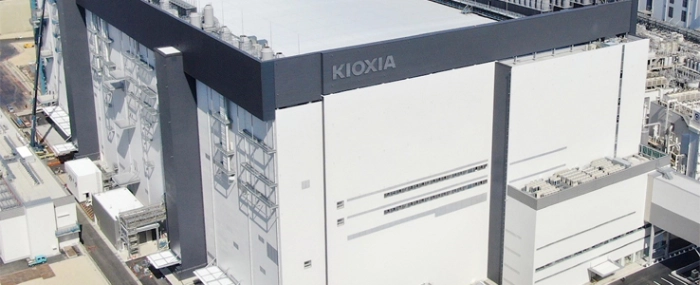
Kioxia and WD increase capacity utilisation
The anticipation of NAND Flash price hikes into Q2 has motivated certain suppliers to minimise losses and lower costs in hopes of returning to profitability this year. Kioxia and WD led the charge from March, boosting their capacity utilisation rates to nearly 90%—a move not widely adopted by their competitors, reports TrendForce.
According to TrendForce, the production increase is primarily aimed at 112-layer and select 2D products to satisfy the increase in demand anticipated for the second half of the year. This plan is intended to not only ensure profitability this year but also contribute to a projected 10.9% rise in the annual NAND Flash industry supply bit growth rate for 2024.
| 1Q24 | 2Q24 | 3Q24 | 4Q24 | |
| Kioxia/WDC | 75% | 88% | 88% | 88% |
Kioxia sets sight on 218-layer capacity expansion by 2025
Process upgrades have become essential for maintaining cost competitiveness with NAND Flash prices on the rise in 2024 and a gradual reduction in suppliers’ stock levels. As TrendForce points out, Samsung and Micron are at the forefront of this effort, with their 200-layer and above product output anticipated to surpass 40% by the year’s end.
Kioxia and Western Digital’s production focus this year remains on 112 layers. Benefiting from Japanese government subsidies, equipment installation to increase 218-layer output is expected to commence in the latter half of the year, with a more aggressive outlook for 218-layer production in 2025. Kioxia’s strategy involves directly advancing to 300-layer and above processes after 218 layers to achieve a more favourable cost structure and regain technological and cost leadership.
It has been observed that, similar to Kioxia/Western Digital, NAND Flash vendors are likely to progressively ramp up output in the second half of the year. However, with inventory levels of PC and smartphone buyers rising in the first quarter, subsequent procurement momentum is expected to decline.
Furthermore, AI has not significantly spurred NAND Flash capacity upgrades this year, and unless there is a big increase in Enterprise SSD sales, total demand for NAND Flash may not reach forecasts. Thus, TrendForce anticipates that the rate of price increases for NAND Flash contracts will decrease to 10-15% in the second quarter, and then drop to 0-5% in the third quarter.
For more information visit TrendForce.

